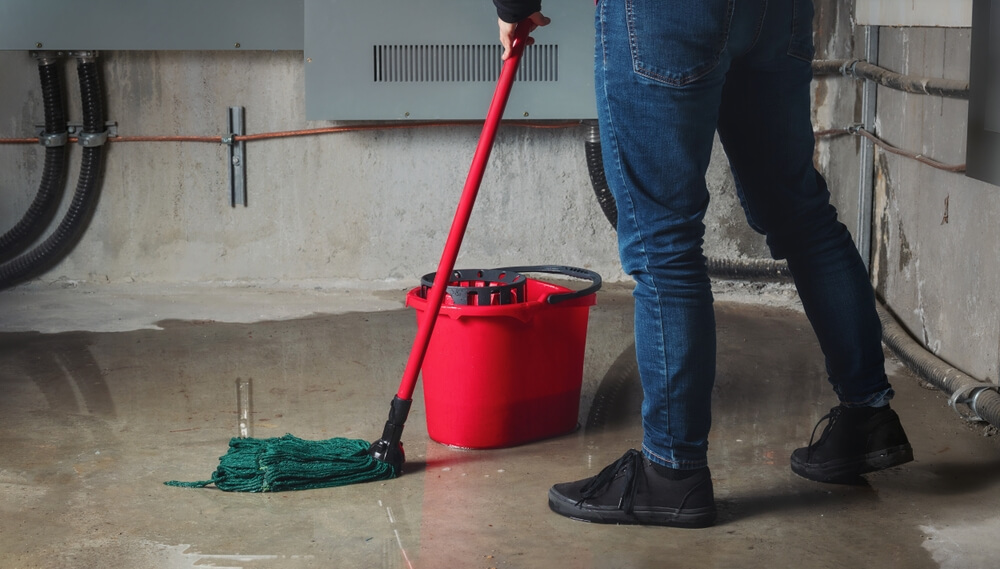
If you are not redirected within 30 seconds, please click here to continue.
Samedi: 10h – 16h HAE

If you are not redirected within 30 seconds, please click here to continue.
If you are not redirected within 30 seconds, please click here to continue.
How to Prepare Your Home for Autumn

This article has been updated from a previous version.
With the pandemic distorting our collective sense of time, it’s hard to believe the summer is already over. But don’t be fooled. Fall is here, and winter is just around the corner. It may be tempting to hide under a blanket until next year, but autumn is about more than pumpkin spice and sweater weather; it’s a time to get some chores done.
Here are the top things you need to address before it gets colder.
Water is your home’s worst enemy
Indoor floods are no fun. Take it from me — I found this out the hard way. Not only are they traumatic and can cause immediate damage to property and possessions, but the long-term effects on the structure of your home (such as mould and rot) can be devastating and expensive.
Also, did you know that your home insurance may not cover flood damage if the cause turns out to be something that could have been prevented through regular home maintenance? Fortunately, floods can be avoided if you know what to do:
- Shut off and drain outside faucets. The faucets you use outside in the summer for your hose are susceptible to freezing. If proper care is not taken to shut off and drain these lines before winter, it can lead to pipes and faucets bursting or cracking and can create a potentially expensive flooding disaster inside your home.
- Clean your eavestroughs. As leaves begin to fall, they will likely fill your gutters and downspouts, blocking water from making it off your roof and away from your house. Cleaning them out regularly is a good idea to help stop water from finding a way inside. If you’re not comfortable cleaning them yourself, many contractors offer services to do this for you.
- Inspect your roof and chimney. The best time to do this is before any leaks occur. From the outside, look for signs of worn, loose, or missing shingles, as well as shingles with mould or rot on them. Check any skylights or vents for damaged or worn sealant. From inside your attic check the underside of your roof for water damage, holes and nests. Again, if you are not comfortable going onto your roof or into your attic, hire a professional.
What about weather-related water damage? Are you covered?
Sometimes a flood occurs despite preventative measures to protect your home. That’s where home insurance can protect you.
Don't waste time calling around for home insurance
Use RATESDOTCA to shop around and compare multiple quotes at the same time.
Finding the best home insurance coverage has never been so easy!
But floods are not automatically covered. You have to request that coverage beforehand.
A 2018 Insurance Bureau of Canada survey found that almost 45% of Canadian homeowners believed they had flood insurance as part of their home insurance policy. Flooding is the costliest disaster in Canada year after year. There are two types of weather-related water coverage available — overland flooding and sewer backup — and they’re both optional. You would need to add the coverage for those perils to your policy.
Adding flood coverage will increase your monthly premium. If cost is a concern, you may be able to lower your premium by switching insurance companies. Try comparing home insurance rates from other insurance providers and see what you’d have to pay for flood protection. With water damage claims becoming increasingly common in all parts of Canada, you don’t want to risk making do without it.
Banish cold drafts before they arrive
No one likes a chilly, drafty home. Having a good seal around all the openings around your house will not only make your home toastier but can also save you a whole lot on your hydro bill. Check and update things like:
- Caulking around windows and doors. Caulking will prevent cold air from getting inside your home. Even if you did this in the spring, it’s a good idea to check to see if you need to add more caulking in certain spots. You should inspect around heat vents for missing caulking and broken seals.
- Weatherstripping. Weatherstripping loses its effectiveness with age and needs to be replaced every few years. Do a visual check of the stripping around exterior doors and windows (including your garage door and attic openings) and replace it if it appears worn or cracked. Also, check to see if you can feel air moving when your doors and windows are closed. To check if you have a draft issue, close a door or window on a strip of paper. If the paper slides easily, you need to update your weatherstripping.
Out with the old, in with the new
It seems like every single year my shovels get stuck in my shed, held prisoner inside by a pile of snow blocking the doors. Imagine a moment in the future where there is a sudden big storm outside and your snowblower is still buried behind a big pile of camping equipment (or worse, it won't start), or you can’t find your shovels and your car is trapped. Now is a great time to find and test your equipment. It wouldn’t hurt to also stock up on ice-melt sidewalk salt (it always sells out after the first big storm.) You should also:
- Bring your patio furniture in, or cover it
- Empty and store rain barrels, flower pots, etc.
- Put away rakes, leaf blowers, lawnmowers, and winterize them if needed
- Remove and put away air conditioner window units
Clean, heated air is your friend
Make sure your home is fire safe, allergy free, and comfortable. It may go without saying, but your furnace is going to become very important to you again soon. The first thing you should do before kicking on the heat is to clean or replace your furnace filter. Not only does this help improve the quality of your inside air; it also keeps your furnace running more efficiently. Cleaning the furnace and testing it (or hiring someone to do this) is essential to do in the fall, especially as the furnace gets older.
If your home is heated with baseboard or radiator heating, they should be cleaned and inspected for potential hazards as well.
Finally, this is also a great time to:
- Clean and inspect your fireplace (if you have one)
- Clean and inspect your dryer vent
- Change the batteries in your smoke detectors
- Check that carbon monoxide detectors are working properly
- Inspect fire extinguishers
- Inspect and test sump pumps, and
- Test your generator (if you have one)
Also, check your home insurance policy to ensure you have the coverage you need to pay for any unexpected mishaps. In addition, there may be discounts on your home policy available to you to take advantage of to save a few dollars.
Once you do all that, you will finally be ready for that blanket and pumpkin-spiced latte. You’ve earned it!
Get money-saving tips in your inbox.
Stay on top of personal finance tips from our money experts!










